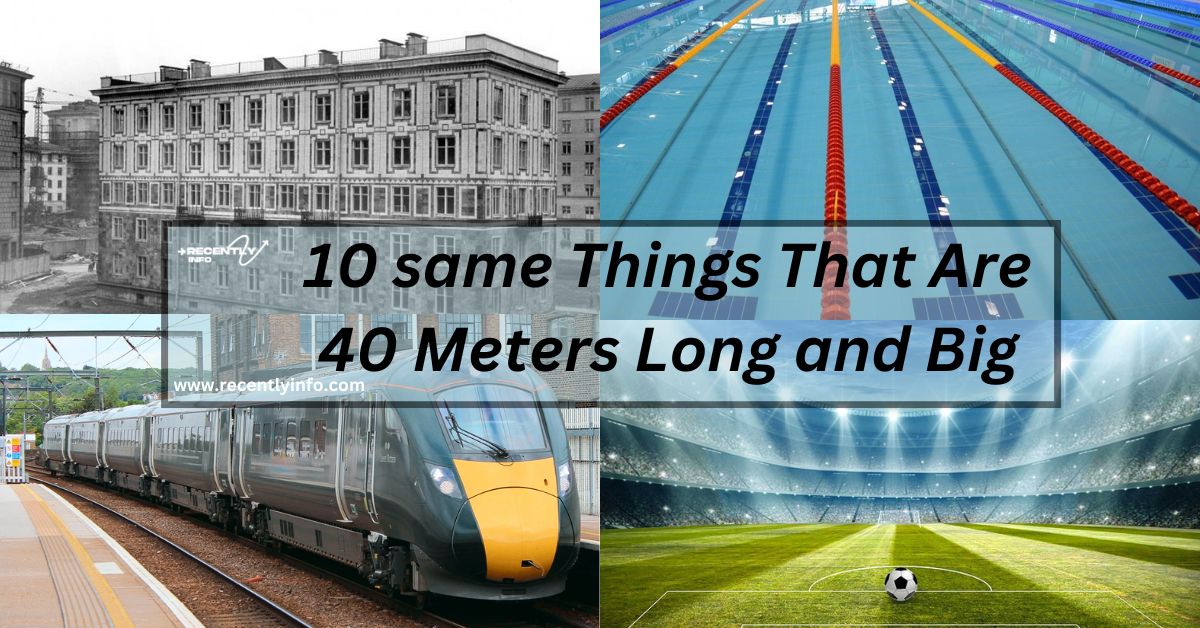Understanding forty meters (131 feet) can be a challenge, especially when we’re not used to visualizing such large distances in our day-to-day lives. You might wonder: “How long is forty meters really?” Well, that’s what we’re here to explore.
In this article, we’ll dive deep into real-world objects, human-made structures, and natural wonders that match this length to help you get a clear, relatable sense of what 40 meters looks like. We’ll explore famous landmarks, iconic buildings, and large objects that serve as perfect visual representations of this distance.
How Long is Forty Meters?
Forty meters, or 131 feet, is a distance that’s often overlooked, but it shows up in many aspects of our world. Whether it’s in transportation, architecture, or sports, this length connects us to the vast dimensions of both natural and human-made creations. Understanding and comparing 40 meters can help in everything from construction projects to visualizing sports fields, or even appreciating the grandeur of famous statues and buildings.
Let’s start by examining ten things that are commonly around forty meters in length or height.
Read Related Blog: 8 common Things That Are 500 Meters Long or Big
Three School Buses

When thinking about large objects, three school buses can help you understand how long 40 meters really is. A typical school bus is about 13.7 meters in length, so placing three of them in a row will give you 41 meters. This is close enough to help visualize the length. School buses are common in many countries, so this example is a great way to picture the size of forty meters. Whether driving past a school or seeing buses in a parking lot, you can easily imagine how long this stretch would be if three were lined up end to end.
This comparison works well because school buses are large vehicles, and most people have seen them in their daily lives. Their solid, recognizable shape makes them an ideal reference point for understanding distances. If you want to get a good idea of how far forty meters is, imagine walking alongside three school buses parked one after the other. That’s roughly the same distance.
| Object | Length in Meters | Equivalent to 40 Meters |
| One School Bus | 13.7 meters | 45 feet |
| Three School Buses | 41 meters | Yes |
| 40 Meters | 40 meters | 3 school buses approx. |
The Length of an Olympic Swimming Pool
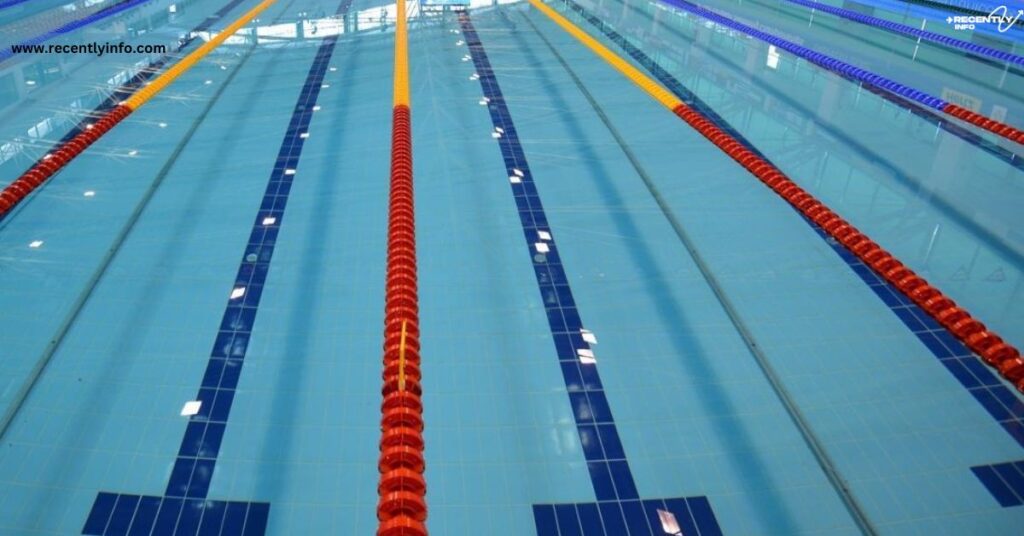
An Olympic swimming pool is exactly 50 meters long. Swimmers race back and forth in this pool during competitions like the Olympics. To understand forty meters, think about swimming across most of the pool. If you swim 80% of the pool’s length, you will have covered about 40 meters. This is a big distance that swimmers train hard to cross as fast as they can. The pool’s large size helps us picture how long forty meters is in real life.
When you compare forty meters to an Olympic pool, you can see it’s almost the entire length. The pool stretches out in front of you, and you can imagine how long that distance really feels. For anyone who has seen or swum in one of these pools, this comparison makes the idea of forty meters much easier to understand.
| Length Comparison | Meters (m) | Feet (ft) |
| Olympic Swimming Pool | 50 meters | 164 feet |
| Forty Meters in the Pool | 40 meters | 131 feet |
Four Telephone Poles
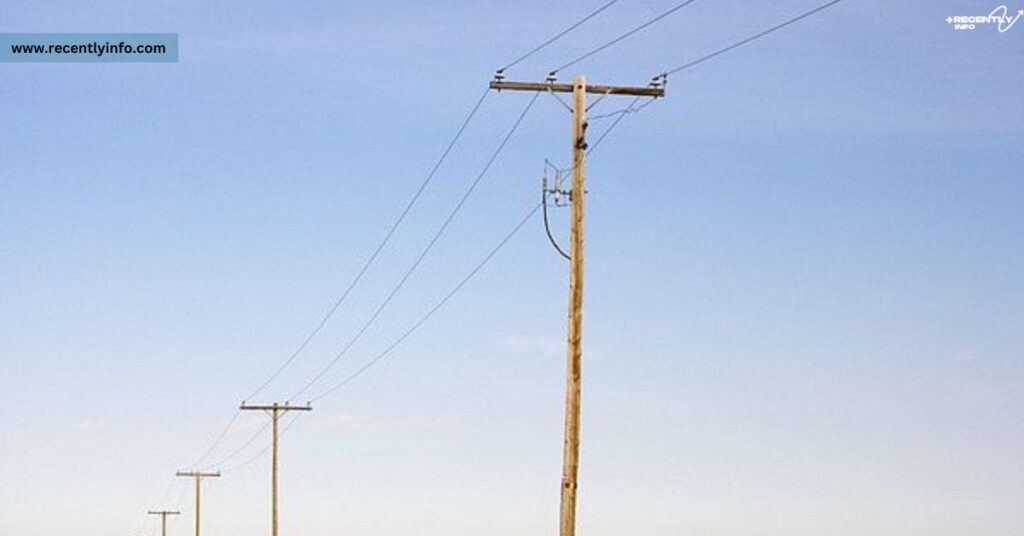
A standard telephone pole is about 10 meters tall. If you place four telephone poles in a row, their combined height reaches about 40 meters. This helps us understand how long forty meters really is. These poles are often seen in neighborhoods and streets, carrying power lines and cables. When you picture four of them stacked up or placed end to end, it makes it much easier to imagine the distance of forty meters.
The height of four telephone poles is a helpful way to compare and visualize the length. Imagine standing next to one pole and then thinking of three more just like it. Together, they give us a clear idea of what forty meters looks like in everyday life. These tall structures help connect communities, and they also serve as a great example for understanding larger distances.
| Length Comparison | Meters (m) | Feet (ft) |
| One Telephone Pole | 10 meters | 33 feet |
| Four Telephone Poles | 40 meters | 131 feet |
A Soccer Field Goal to Goal Line
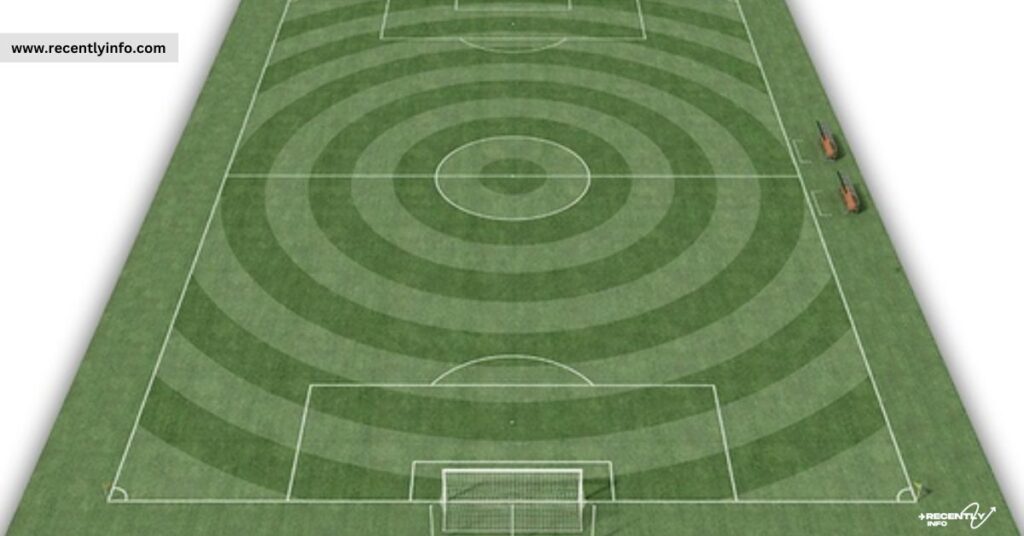
On a standard soccer field, the distance from one goal line to the other is about 100 to 110 meters. This is the length of the entire field where soccer players run and play. However, forty meters covers a little less than half of the field. Imagine starting at one goal line and running towards the center of the field. By the time you reach forty meters, you’re almost halfway to the opposite goal. This gives us a strong idea of how long forty meters really is when comparing it to the size of a soccer field.
The distance between the goal line and forty meters is often crossed quickly during a soccer match, but in real life, this is a large distance. Picture a player sprinting with the ball from the goal area, making their way across the field. When they reach forty meters, they’ve covered a big part of the field. This comparison helps make the length of forty meters easy to understand.
| Length Comparison | Meters (m) | Feet (ft) |
| Entire Soccer Field (Goal to Goal Line) | 100-110 meters | 328-360 feet |
| Forty Meters on the Soccer Field | 40 meters | 131 feet |
Two Standard Shipping Containers

A standard shipping container is about 20 meters long. These large containers are often used to transport goods by truck, ship, or train. When you place two shipping containers end to end, their combined length is exactly 40 meters. This makes them a perfect example of how long forty meters is. These containers are big, sturdy, and built to carry heavy loads, so it’s easy to imagine how long that distance is when you see two of them lined up.
The length of two shipping containers is something you can picture at a port or on a truck. These containers are used all around the world, making this comparison helpful for understanding long distances. When two of them are placed back to back, you get a clear idea of what forty meters looks like.
| Length Comparison | Meters (m) | Feet (ft) |
| One Standard Shipping Container | 20 meters | 66 feet |
| Two Standard Shipping Containers | 40 meters | 131 feet |
A Ferris Wheel (Small to Medium Size)
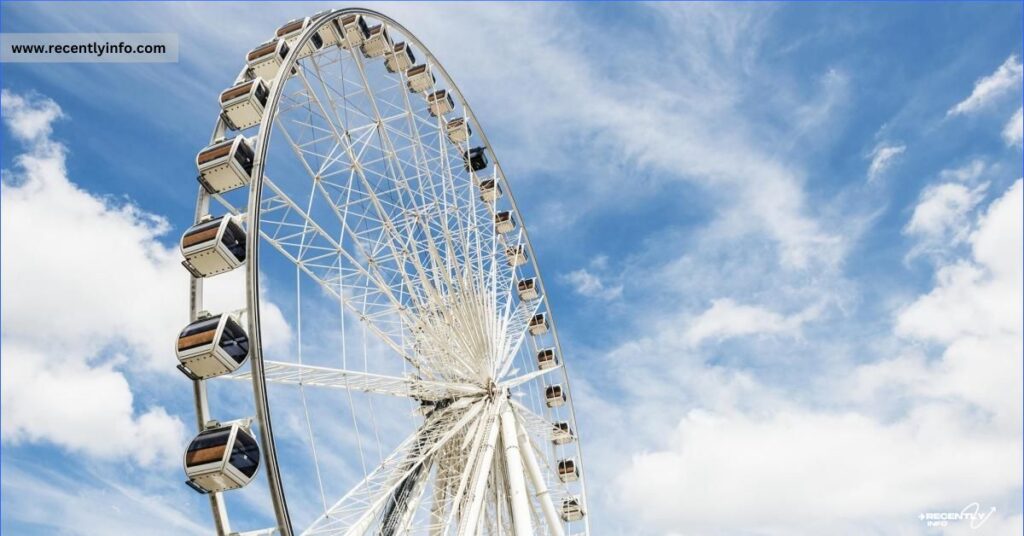
A small to medium-sized Ferris wheel is about 40 meters tall. These types of Ferris wheels are often found at local fairs and amusement parks. If you’ve ever ridden one, you know how exciting it is to reach the top and see the whole park below. The height of the Ferris wheel gives a clear idea of what forty meters looks like. From the ground to the top, it’s a big distance, and being on the ride helps you feel just how tall it is.
When you think about the height of 40 meters, picture sitting in one of the cabins, slowly rising up to the top of the wheel. The Ferris wheel’s height is perfect for understanding how long forty meters is, making it an easy way to visualize this distance in everyday life.
| Length Comparison | Meters (m) | Feet (ft) |
| A Ferris Wheel (Small to Medium) | 40 meters | 131 feet |
Half a Football Field

A full football field is 100 meters long from one end to the other. This means that half a football field measures 50 meters. When you think about this distance, it helps to understand how long forty meters really is. Half the field is a little longer than forty meters. Picture a player running from one end zone to the middle of the field. That’s about 50 meters or close to half a football field. This gives a good idea of how far forty meters is in a fun and familiar way.
When you compare forty meters to half a football field, you can easily see the difference. Imagine standing at the goal line and looking towards the middle of the field. You would be just a little short of the halfway point. This distance is common in sports, making it easy to visualize. Half a football field is an excellent way to grasp how long forty meters is in our everyday lives.
| Length Comparison | Meters (m) | Feet (ft) |
| Full Football Field | 100 meters | 328 feet |
| Half a Football Field | 50 meters | 164 feet |
| Forty Meters | 40 meters | 131 feet |
A 10-Story Building

A 10-story building is usually about 30 to 40 meters tall. Each story is around 3 to 4 meters high. This means that when you see a 10-story building, it is a very tall structure. If the building is 40 meters tall, it stands as high as fourteen school buses stacked on top of each other. This height gives us a clear idea of what forty meters looks like in real life. People use these tall buildings for homes, offices, and stores, making them important parts of cities.
When you compare forty meters to a 10-story building, you can easily understand the size. Imagine standing at the base of the building and looking up at the top. The height of the building is impressive and shows how big forty meters really is. This comparison helps people visualize long distances by using familiar structures like buildings they see every day.
| Length Comparison | Meters (m) | Feet (ft) |
| Average Height of 1 Story | 3-4 meters | 10-13 feet |
| 10-Story Building | 30-40 meters | 98-131 feet |
| Forty Meters | 40 meters | 131 feet |
Five Bowling Lanes
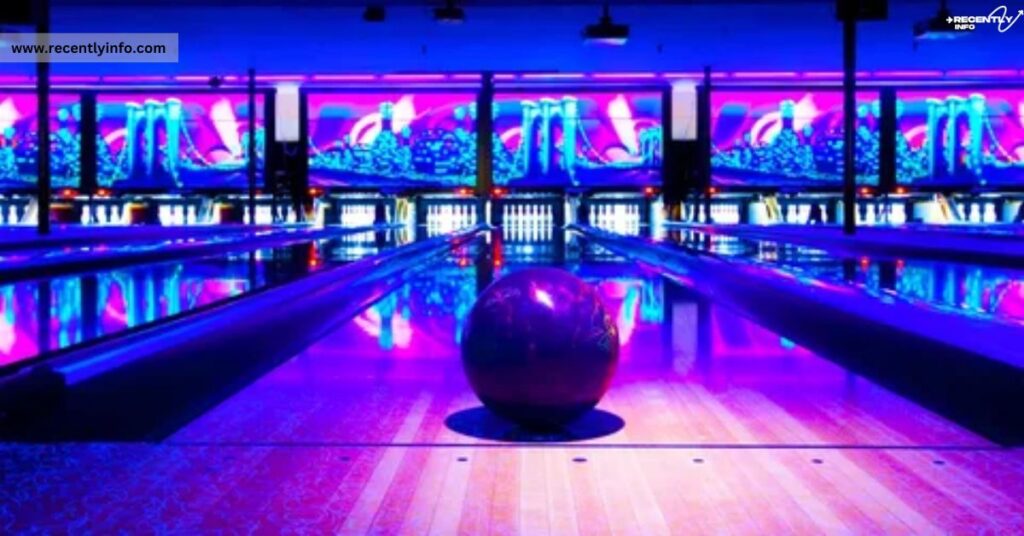
A standard bowling lane is about 20 meters long. When you line up five bowling lanes in a row, their total length is 100 meters. This means you can fit five bowling lanes next to each other in a straight line. Bowling is a fun sport where players roll a heavy ball down the lane to knock down pins. Seeing five bowling lanes together helps us understand how long forty meters really is.
When you think about forty meters, it is a little less than the length of two bowling lanes. If you start at the end of one lane and walk toward the end of the second lane, you will cover about 40 meters. This makes it easy to picture how long that distance is in a setting many people enjoy. Five bowling lanes give a great example for understanding long distances in everyday life.
| Length Comparison | Meters (m) | Feet (ft) |
| One Bowling Lane | 20 meters | 66 feet |
| Five Bowling Lanes | 100 meters | 328 feet |
| Forty Meters | 40 meters | 131 feet |
One-and-a-Half Railway Cars
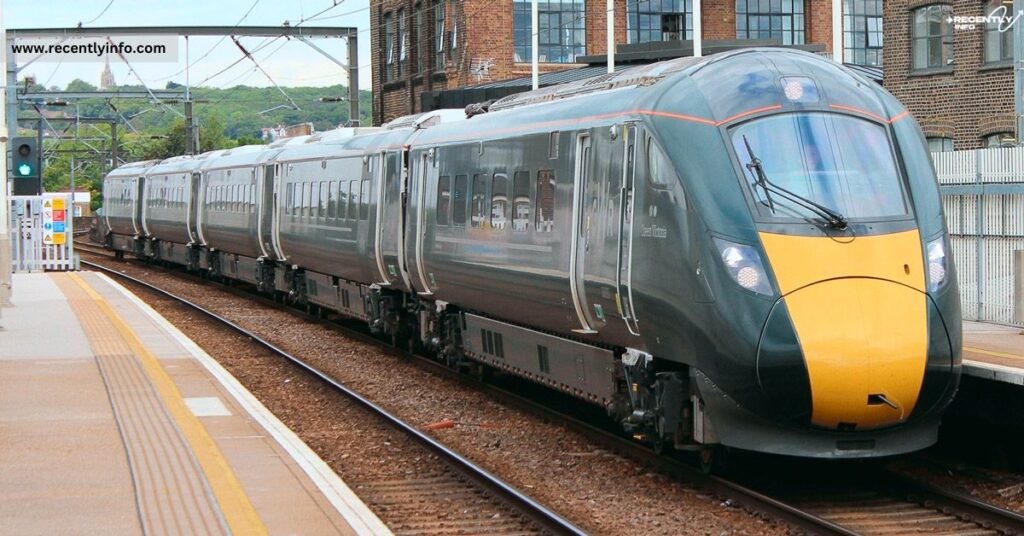
A typical railway car is about 20 meters long. When you put together one-and-a-half railway cars, their total length is 30 meters. This means that when you see a train with one full car and half of another, you get a good idea of how long thirty meters is. These railway cars are used to carry people or goods across long distances. Understanding this length helps us visualize distances in the real world.
When you think about forty meters, it is a little longer than one-and-a-half railway cars. If you want to picture forty meters, imagine standing at the end of a train and looking toward the front. The distance from the end of one-and-a-half railway cars to the end of the next car will give you an idea of how long forty meters really is. This comparison makes it easier to understand long distances using something familiar.
| Length Comparison | Meters (m) | Feet (ft) |
| One Railway Car | 20 meters | 66 feet |
| One-and-a-Half Railway Cars | 30 meters | 98 feet |
| Forty Meters | 40 meters | 131 feet |
Must Read: 15 Common Things That Are 30 Centimeters Long
Conclusion
Whether it’s the length of three school buses, the height of a 10-story building, or the distance from penalty box to midfield on a soccer field, forty meters is a significant length that appears in many different forms throughout our world. From famous landmarks like the Statue of Liberty to everyday objects like shipping containers, understanding this measurement helps us grasp the scale of the structures and objects around us.By comparing these examples, we gain a greater appreciation of the engineering feats and natural wonders that surround us. Next time you see a bowling lane or stand beneath a Ferris wheel, you’ll have a better idea of what 40 meters looks like in real life.

Ethan Robert is a dedicated writer at Recently Info, where he shares insightful guides on measurements and dimensions of everyday objects. His passion for simplifying complex topics makes his articles both informative and easy to follow, helping readers navigate daily life with ease.
